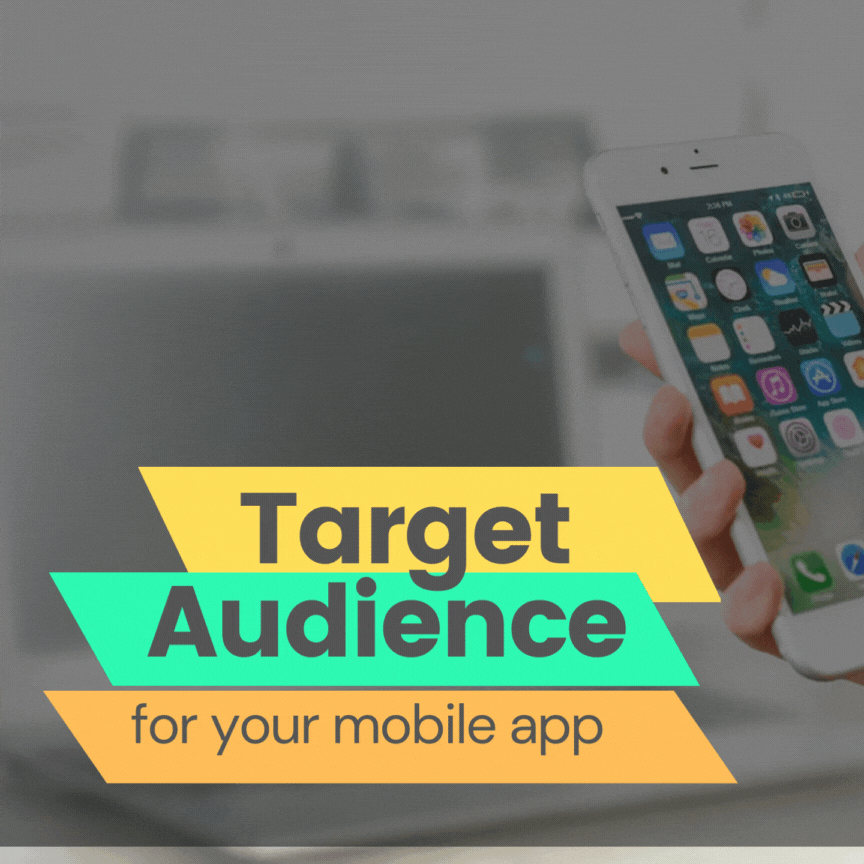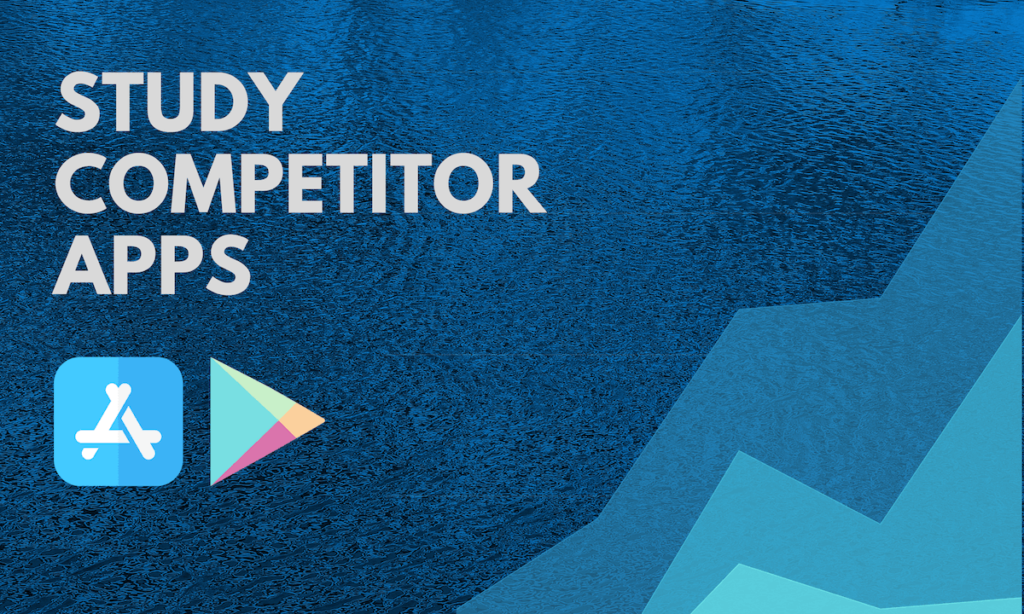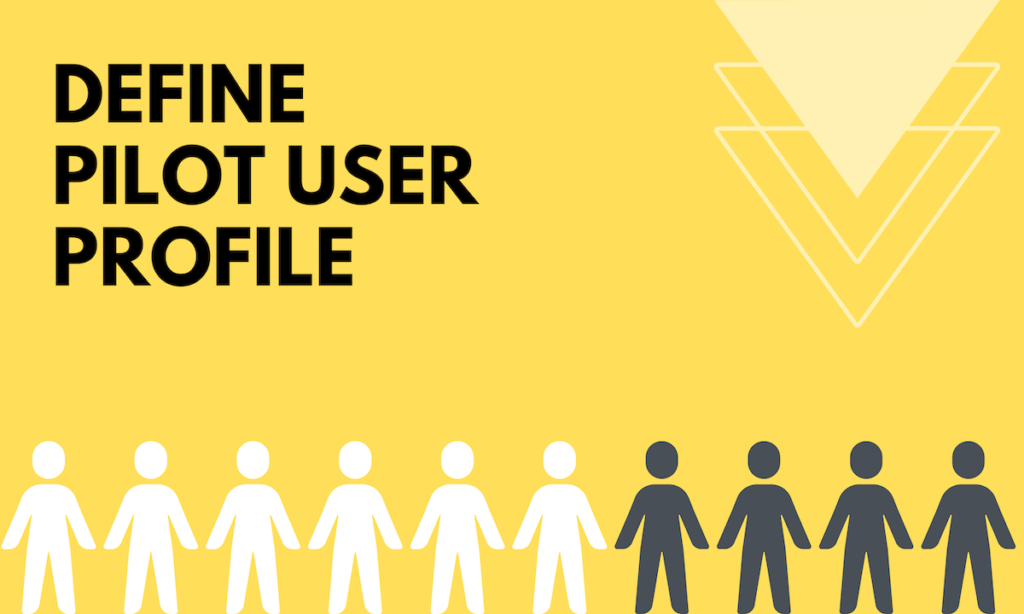
Determining the target audience for your app requires a combination of both qualitative and quantitative research methods. You can start by understanding the target audience typical for your app category and analyzing market reports from credible sources. Additionally, you can make assumptions about who your target users might be. However, it’s important to have more concrete data to validate these assumptions.
Let’s go through some steps that help you define your target audience for your mobile or web app.

Analyze your current consumer
If you already have a website, you can use Google Analytics or Facebook Audience insights to gather data on your current user base. This can provide valuable information on demographics, psychographics, geographic location, and preferred devices. If you have a custom relationship management system, blog, live-chat, social media accounts, or YouTube channel, you can use these resources to collect more data on your consumers.
If you’re starting from scratch, consider creating an advertising landing page. This page can describe the benefits of your app and include a call-to-action or poll. By using Google Analytics, you can track data on demographics, psychographics, geographic location, and preferred devices of your site visitors.

Look at competitors apps
You can also gather information on your target audience by analyzing the users of your competitors’ apps. Start by reviewing user comments and feedback on app stores. This can give you an idea of what your potential users are looking for and what your app should and shouldn’t include.
Additionally, you can examine your competitors’ social media activities, including their most popular posts and the comments and accounts of their active followers. You can also evaluate the success of their marketing campaigns and app store optimization (ASO) strategies to determine what works for their target audience.
Online services such as App Annie, MobileAction, Apptopia, etc. can provide valuable information on the target audience of your competitors’ apps.

Start by defining a pilot user profile
To identify your target audience for an app, you need to create a pilot (preliminary) user profile by gathering data. This includes analyzing the intrinsic target audience for your app category, using reliable market reports, and considering your own assumptions about your target users. However, this is just the first step. To get a complete picture of your target audience, you need to look beyond the obvious and get a deeper understanding of their fears, hopes, dreams, and desires.
To create a comprehensive target user profile, you can use information from your landing page analysis, competitor research, and your personal experience. By using these resources, you can segment your target audience using four core criteria: their problem, the solution your app provides, their thought process, and how they act.

Find real people who fit the profile
To truly find your target audience, it’s important to “get out of the building” and connect with real people who match your target user profile. You can do this by searching for keywords related to your product or service online and examining social media accounts, online communities, forums, blogs, and review platforms.
You can also find potential users by networking with family, friends, neighbors, colleagues, and by attending offline events where your target audience is likely to be present. By reaching out to these individuals and verifying that they match your target audience criteria, you can refine and revise your target user profile as needed.
Develop User Personas
The information gathered from your target audience research will help you create user personas that are tailored to the real preferences, demographics, psychographics, and in-market behaviors of potential app users.
The benefit of creating user personas when defining the target audience for an app is that it helps to tailor the app and its marketing strategies to the specific needs and preferences of real people who are likely to use the app. User personas provide a detailed, fictional representation of the target audience based on actual data, including demographics, psychographics, in-market behavior, and more. This information can then be used to develop marketing messages, adjust user engagement strategies, and even fine-tune the app itself.
Update & Revise
Extenova provides tips for creating effective user personas for your mobile or web app, including regularly updating the information to reflect changes and new insights. These revised personas will be more accurate and lifelike, taking into account the attributes of real people.
After launching your app or an update, it’s important to collect feedback and analyze user engagement data to gain a deeper understanding of your target audience. This data can help you determine the best acquisition channels and refine your marketing strategies to better engage your users.
Continuously revising your user personas will become a regular practice for your team to stay on top of changes in your target audience’s behavior.
How much time would it take to determine the target audience for my app?
The potential audience for mobile apps is vast and diverse, encompassing millions of users. Although you may initially plan to target only a specific geographic area, your target audience could consist of multiple user groups, depending on the niche, complexity, and size of your app. This may necessitate developing multiple user persona profiles simultaneously. Keep in mind that creating a user persona for a basic app can take around 30-40 hours.
How does the platform (iOS or Android) influence determining the target audience of a mobile app?
When developing a mobile app for iOS, Android, or both platforms, it’s important to consider how this will impact the development process.

Historically, iOS users tend to have higher incomes and engagement rates, making them more likely to make in-app purchases than Android users. On the other hand, Android users are more likely to open push notifications than iOS users (about 11% compared to 5%). These are just a few examples of differences to keep in mind when analyzing your target market.
Who is responsible for finding the target audience for an app?
If you choose to work with a mobile app development company, the product manager is typically responsible for identifying your target audience.
The process of finding potential customers, conducting interviews, and creating user personas may also involve a project manager, business analyst, and UI/UX designer.
Our team at Extenova, prioritizes conducting thorough research before embarking on the development process for any mobile app project. This research includes analyzing market trends, competitor activity, and the target audience to make informed decisions about the app’s functionality, launch strategy, development approach, and monetization models.
In addition to research, we also conduct app strategy sessions with our clients. During these sessions, we evaluate their business objectives and product requirements and conduct a thorough examination of current user needs to determine the best course of action for their product. Our goal is to create a solid product strategy that will streamline the key phases of product development and ensure a smooth and efficient process.
At Extenova, we believe that a strong product strategy is essential for success in the mobile app industry. By taking the time to conduct thorough research and engage in strategy sessions, we can make data-driven decisions that align with the unique needs and goals of each client.

